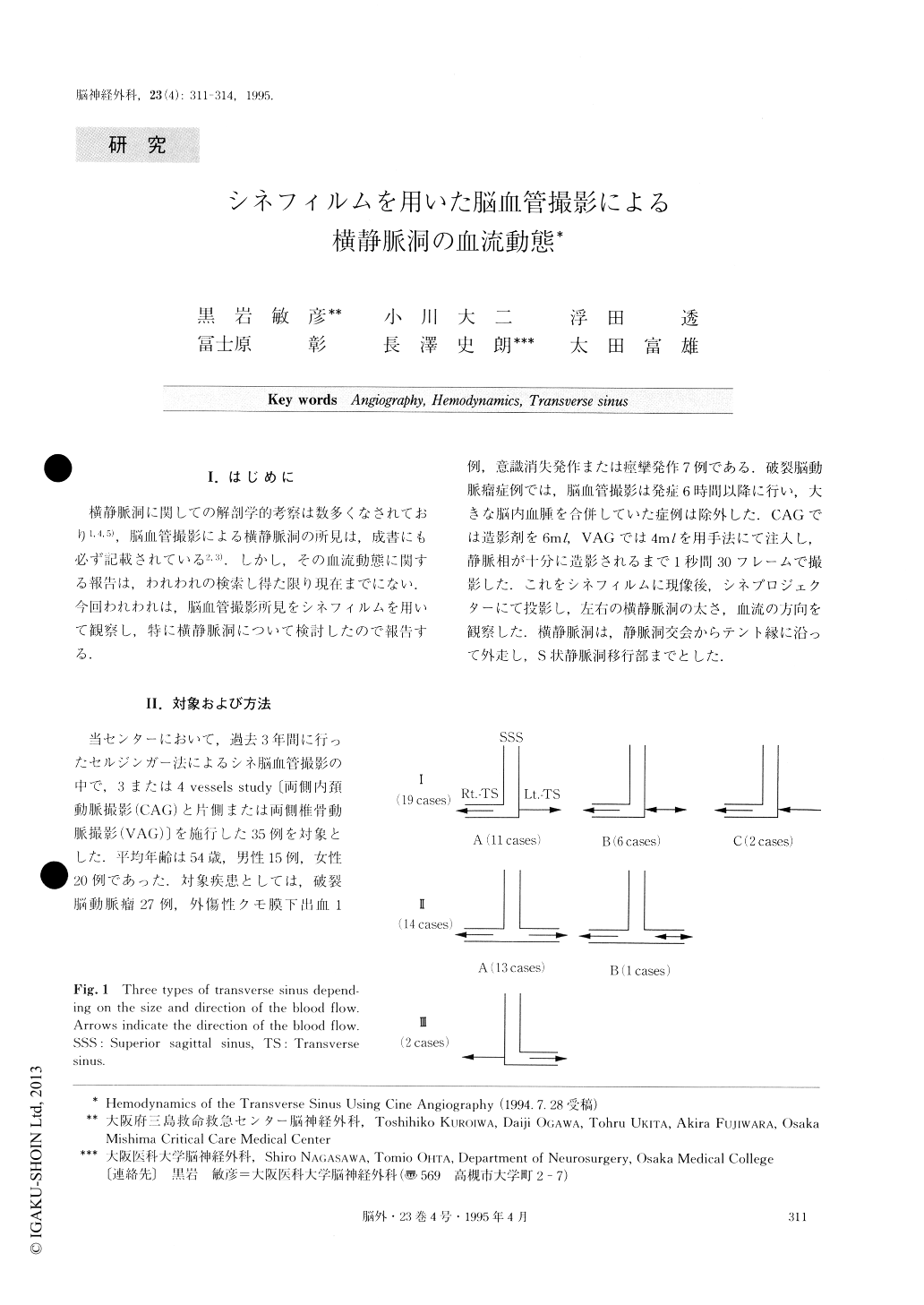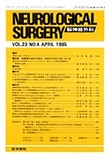Japanese
English
- 有料閲覧
- Abstract 文献概要
- 1ページ目 Look Inside
I.はじめに
横静脈洞に関しての解剖学的考察は数多くなされており1,4,5),脳血管撮影による横静脈洞の所見は,成書にも必ず記載されている2,3).しかし,その血流動態に関する報告は,われわれの検索し得た限り現在までにない.今回われわれは,脳血管撮影所見をシネフィルムを用いて観察し,特に横静脈洞について検討したので報告する.
Numerous anatomical observations of the transverse sinus (TS) have been reported and features of this sinus, as assessed by cerebral angiography, are referred to in many monographs. However, there are no studies on the hemodynamics in the TS. We recently investi-gated the TS, using cerebral angiography with cinema-tographic films.
The subjects were 35 patients who underwent angiography of 3 or 4 vessels at our institute, using Seldinger's method. The contrast material was infused manually. Cinematography permitted observattion of the size of the bilateral TS and the direction of blood flow. Depending on the features of the bilateral TS, the pa-tients could be divided into three groups. Type Ⅰ (cases where the right TS was dominant) accounted for the highest percentage (54.3%, 19/35). In 11 of these 19 cases, the left TS also showed antegrade blood flow. In 6 of the Type Ⅰ group, the blood flow through the left TS was in two directions (towards the Torcular Herophili and towards the left sigmoid sinus). In the other two cases rated as Type Ⅰ, the blood flow through the left TS was in the direction from the Torcular Herophili to the right TS. Fourteen cases (40.0%) were rated as Type Ⅱ (in which both sinuses were similar in size). In 13 of these 14 cases, blood flow through the bilateral TS was almost symmetrical (Type Ⅱ-A). In one of the 14 cases, the blood flow through the left TS was in two directions (towards the Torcular Herophili and towards the left sigmoid sinus). Two cases (5.7%) were rated as Type Ⅲ (in which the left TS was dominant).
It has conventionally been thought that the right TS is usually dominant, and that the blood flow from both the right and left TS enters both sigmoid sinuses. In the present study, however, the blood flow from the left TS entered the right TS in 8 cases (22.9%). These findings seem to be important in the diagnosis and treatment of disease related to the TS.

Copyright © 1995, Igaku-Shoin Ltd. All rights reserved.


